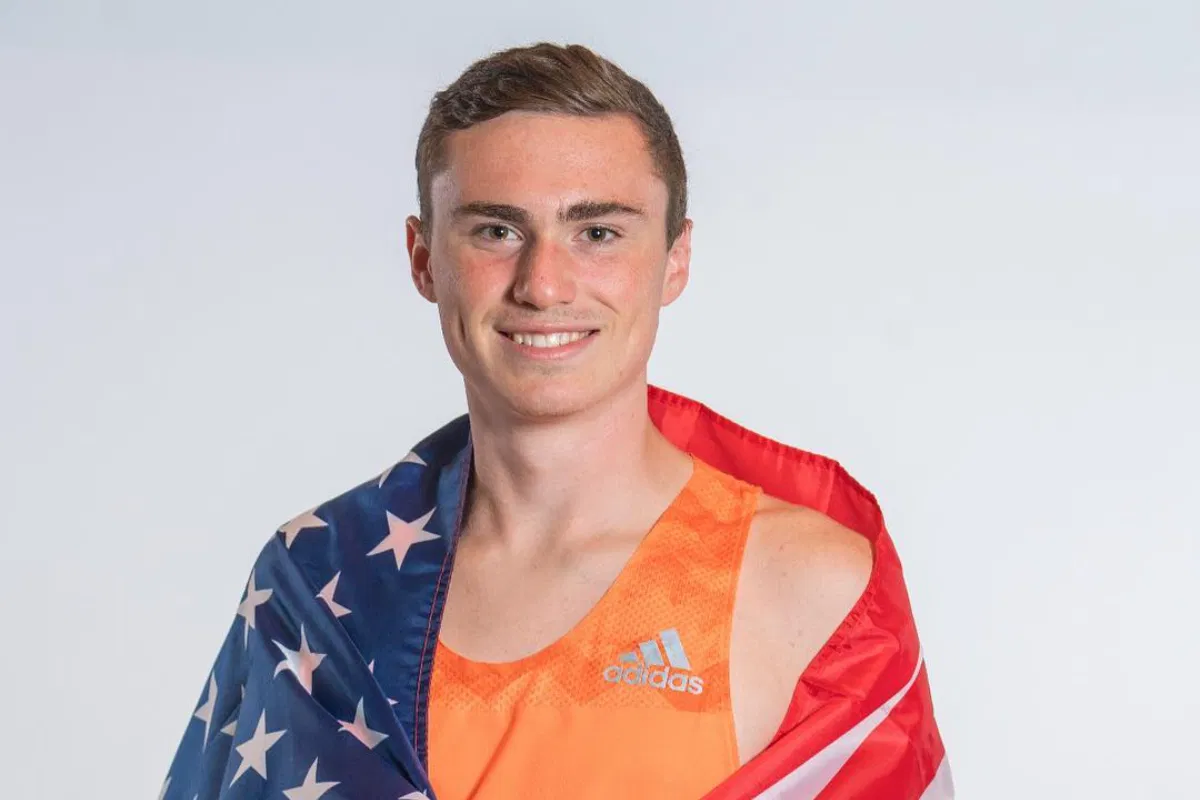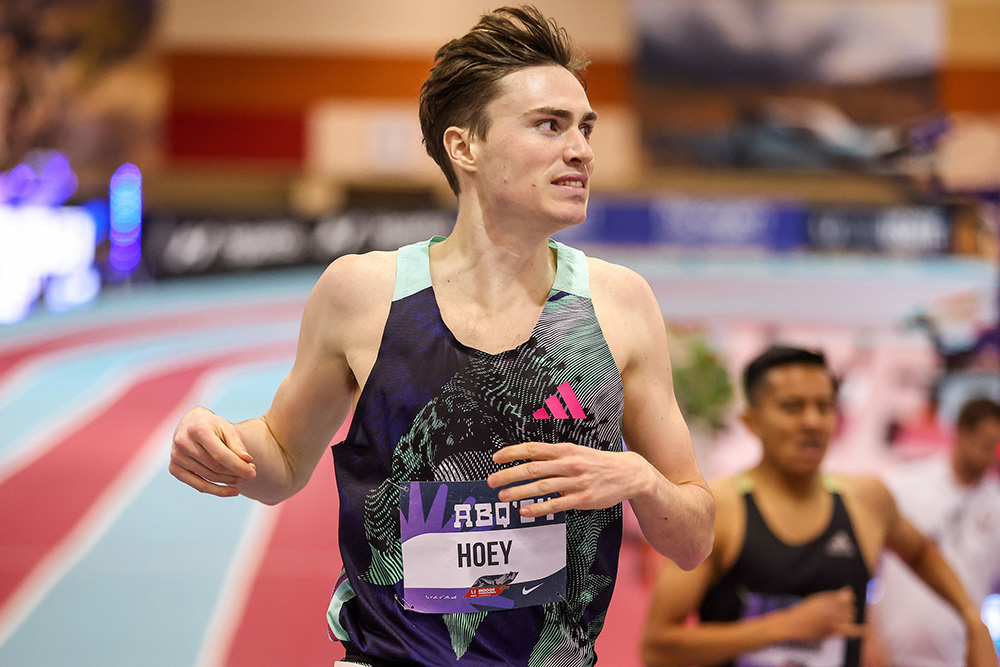On May 14, American track and field fans got a jolt of excitement, Josh Hoey was officially added to the challenger’s lineup for the Philadelphia edition of Grand Slam Track.
The 25-year-old phenom was fresh off an undefeated indoor season, during which he shattered American records in both the 800m (1:43.24) and 1000m (2:14.48), and claimed gold in the 800m at the World Indoor Championships.
To top it off, this meet was a homecoming. Josh Hoey grew up just an hour west of Franklin Field. On race day, family and friends filled the stands, and the energy was electric. But behind the cheers and triumphs, few knew just how close Hoey had come to calling it quits.
The Breaking Point Before the Breakthrough

Josh Hoey’s rise in 2024 was anything but inevitable. As Jonathan Gault reported on LetsRun.com, just a year earlier, Hoey was on the verge of walking away from the sport.
After cycling through five different coaches in as many years, each one promising greatness, each ending in frustration, Hoey’s faith in the system wore thin. With one year left on his Adidas sponsorship, he quietly began interning at his father’s investment firm, preparing for a possible pivot to life beyond the track.
But then he made a radical decision: to bet on himself. Josh Hoey fired the world, and hired himself.
He stripped things back. No coach. No advisor. No safety net. His 2024 season would be his, fully, unapologetically. And if he was going out, he was going out on his terms.
The project needed a name. Fittingly, he turned to Shakespeare, his favorite playwright.
“Once More Track Club” was born, a nod to King Henry V’s rallying cry: “Once more unto the breach, dear friends, once more.”
From Self-Coached to Self-Assured
February 2024 marked Josh Hoey’s first personal best in four years, 1:47.04 in the 800m at the U.S. Indoor Championships. He reached the final, placing third and narrowly missing a World team spot. The improvement was palpable.
In March, he lowered that time to 1:45.54. By April, he was clocking 3:38.63 in the 1500m. At the U.S. Olympic Trials in June, he posted a blistering 1:44.12 in the final, the fourth-fastest time ever in a U.S. final. He didn’t qualify for Paris, but he had proved something far more powerful: the comeback was real.
Then came July. In Belgium, Hoey broke the elusive 1:44 barrier, running a career-best 1:43.80. By the end of the season, he was ranked No. 21 globally. And just when the world began taking notice, Hoey stunned again, a 3:48.90 mile at the Fifth Avenue Mile, finishing behind only Olympic silver medalist Josh Kerr.
Reinforcements and Renewal
But here’s the twist: the lone-wolf season didn’t stay solo for long. Quietly, Hoey began rebuilding his support team, this time, with intention.
Australian coach Justin Rinaldi, famed for guiding Olympic medalist Peter Bol, brought a no-nonsense, science-first approach. With precision methods like finger-prick lactate testing to track exertion, Rinaldi helped shape a smarter, more strategic athlete.
“The main thing we are focused on with Josh is actually pulling him back,” Rinaldi said in an interview with Citius Magazine. “Sometimes you just have to do a little bit less.”
Throughout his resurgence, Hoey worked with a therapist based in Germany, a grounding presence amid the chaos of elite competition.
The Art of Coming Back

What sets Josh Hoey apart isn’t just his ability to run fast, it’s the resilience to slow down, reset, and rise again. His comeback isn’t some cinematic revenge arc; it’s a careful dance between effort and endurance, between doing more and knowing when to do less.
This is a story about split-second finishes, yes. But it’s also about long, silent battles. About staying when leaving seems easier. About finding strength not just in your legs, but in your decisions, your discipline, and your belief in your own worth.
Josh Hoey didn’t just defy the odds, he redefined them. His journey proves that resilience isn’t loud or flashy. Sometimes, it’s quiet. Calculated. Even poetic.
And while the story of 2024 turned heads, the final act hasn’t been written.
Get real time update about this post category directly on your device, subscribe now.


